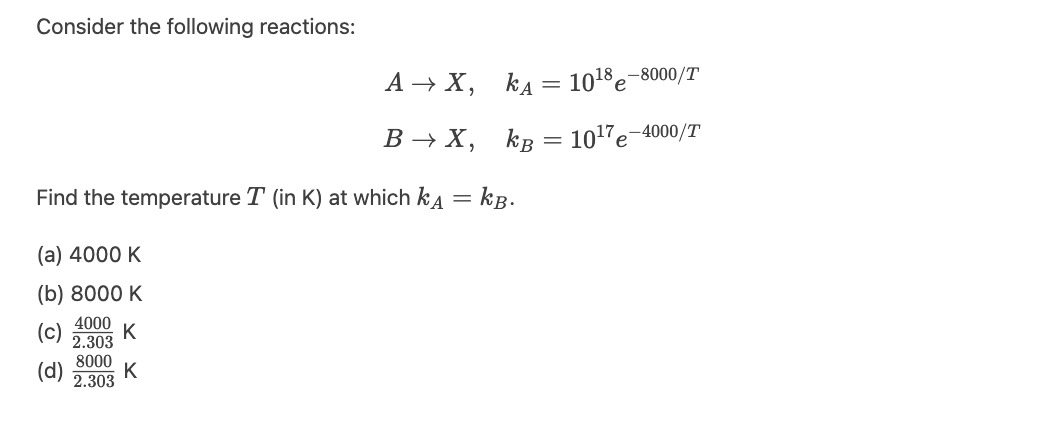Question
Question: Consider the following reactions: $A \longrightarrow X, \ k_A = 10^{18}e^{-8000/T}$ $B \longrighta...
Consider the following reactions:
A⟶X, kA=1018e−8000/T
B⟶X, kB=1017e−4000/T
Find the temperature T (in K) at which kA=kB.

A
4000 K
B
8000 K
C
2.3034000 K
D
2.3038000 K
Answer
2.3034000 K
Explanation
Solution
To find the temperature T at which kA=kB, we set the two rate constants equal to each other:
1018e−8000/T=1017e−4000/T
Dividing both sides by 1017 gives:
10e−8000/T=e−4000/T
Rearranging the terms:
10=e−8000/Te−4000/T=e(−4000/T)−(−8000/T)=e4000/T
Taking the natural logarithm of both sides:
ln(10)=T4000
Since ln(10)≈2.303:
2.303=T4000
Solving for T:
T=2.3034000 K
